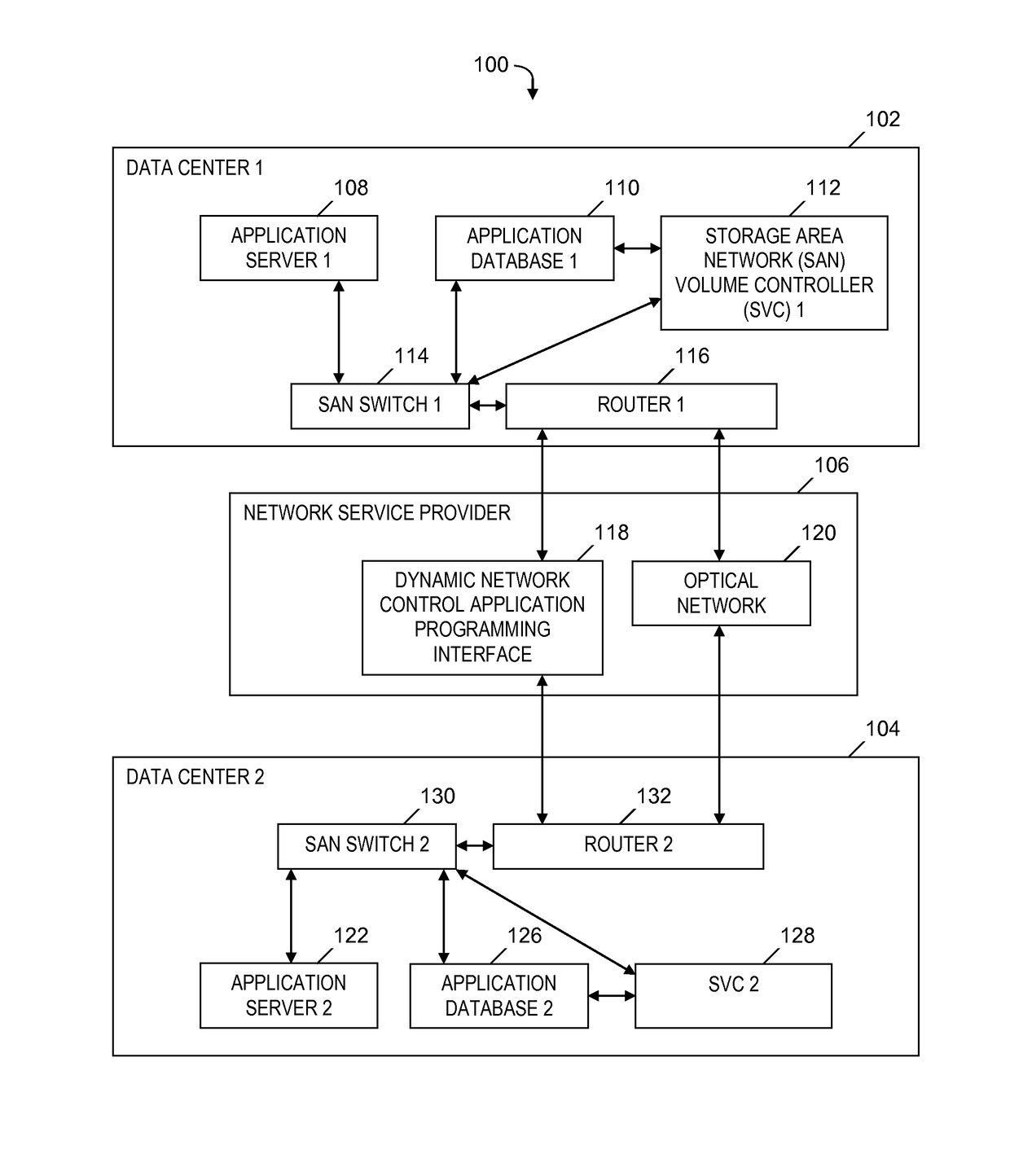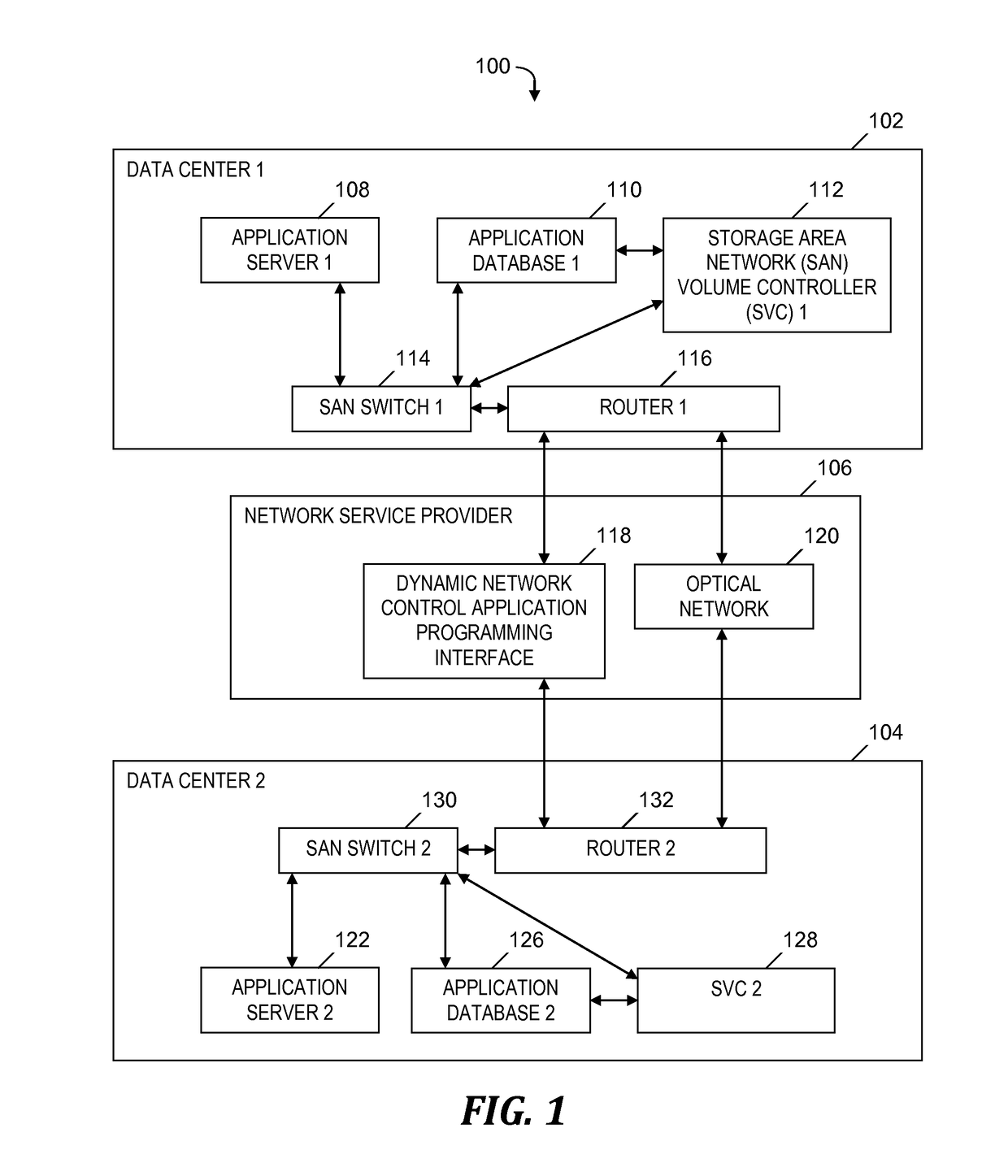Storage mirroring over wide area network circuits with dynamic on-demand capacity
a wide area network and capacity technology, applied in the field of data storage management, can solve the problems of bandwidth over-provisioning for a significant amount of time, high cost of bandwidth, replication is “time critical”, etc., and achieve the effect of reducing or preventing bandwidth over-provisioning, reducing bandwidth used, and optimizing bandwidth usag
- Summary
- Abstract
- Description
- Claims
- Application Information
AI Technical Summary
Benefits of technology
Problems solved by technology
Method used
Image
Examples
Embodiment Construction
Overview
[0016]Embodiments of the present invention provide a data mirroring application that exploits a programmable wide area network (WAN) and transport devices so that the cost and efficiency of data mirroring is optimized for industrial applications that require data replication. The data mirroring application is implemented so that replication occurs over a dedicated channel and so that there are no conflicts with competing entities in a data center. In one embodiment, a database replication application instructs a WAN bandwidth allocator as to when conditions are satisfied for dynamically allocating bandwidth and how much bandwidth is to be dynamically allocated based on the database replication application's current and / or predicted demand for bandwidth. Embodiments of the present invention utilize statistical analysis and probability to determine when to request more or less capacity for data mirroring or replication so that the requests for more capacity are sent ahead of w...
PUM
 Login to View More
Login to View More Abstract
Description
Claims
Application Information
 Login to View More
Login to View More - R&D
- Intellectual Property
- Life Sciences
- Materials
- Tech Scout
- Unparalleled Data Quality
- Higher Quality Content
- 60% Fewer Hallucinations
Browse by: Latest US Patents, China's latest patents, Technical Efficacy Thesaurus, Application Domain, Technology Topic, Popular Technical Reports.
© 2025 PatSnap. All rights reserved.Legal|Privacy policy|Modern Slavery Act Transparency Statement|Sitemap|About US| Contact US: help@patsnap.com



